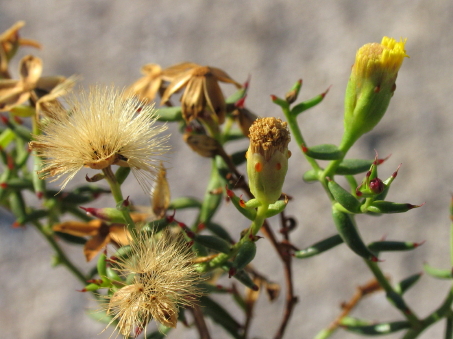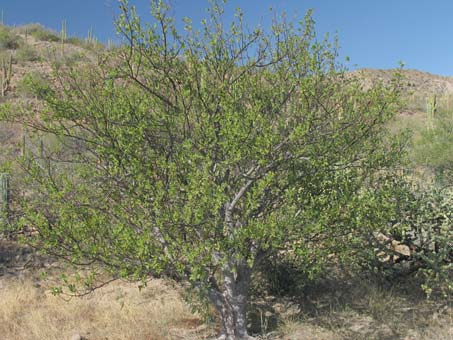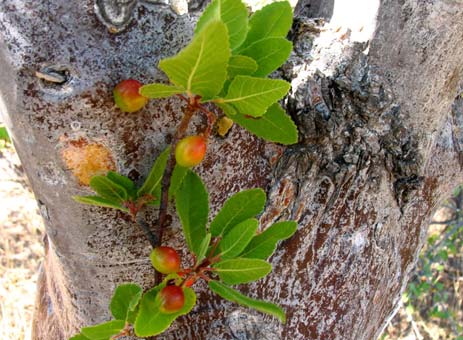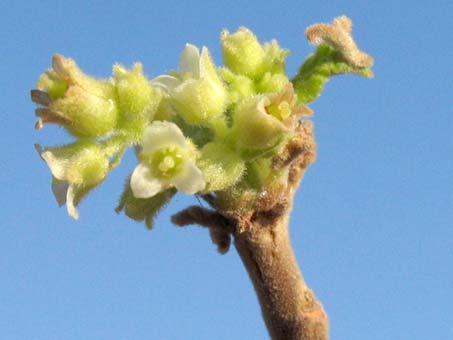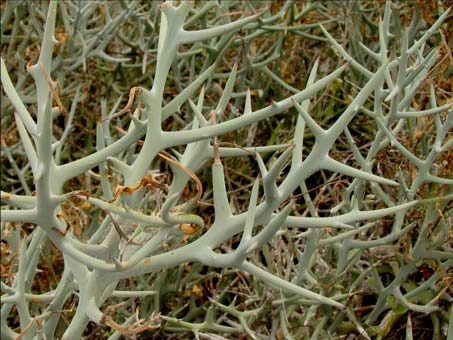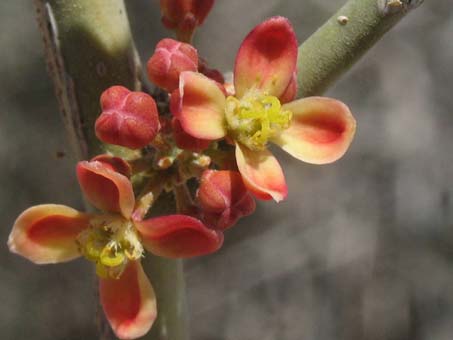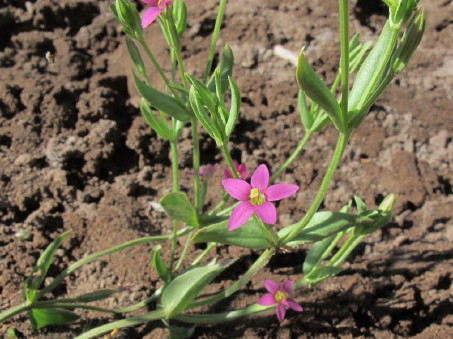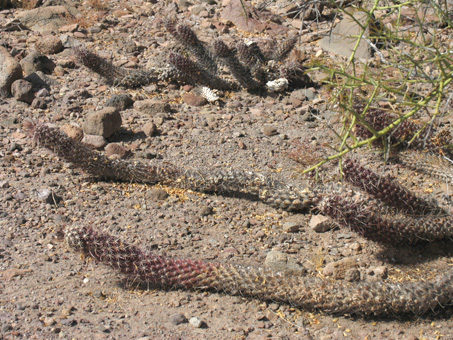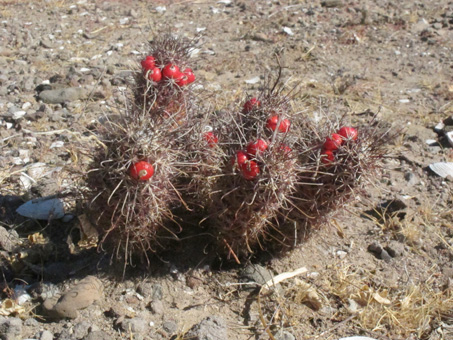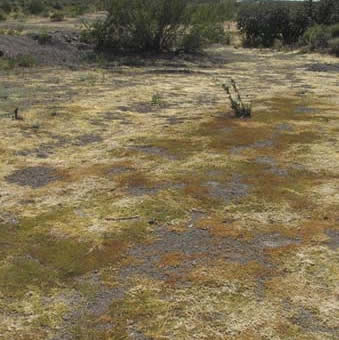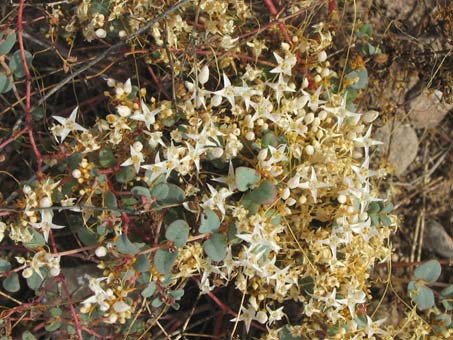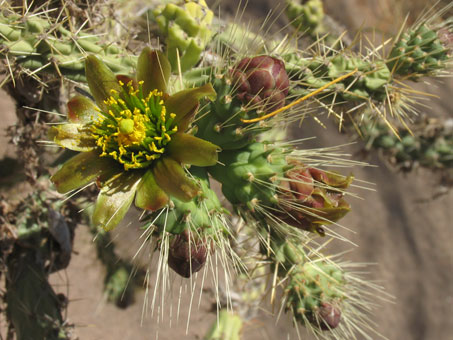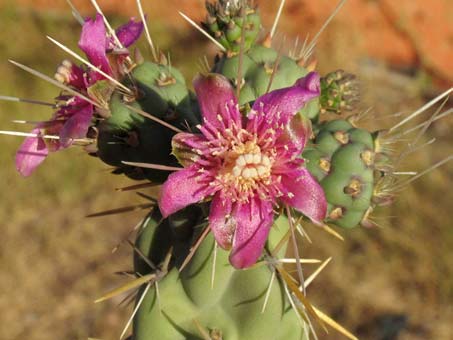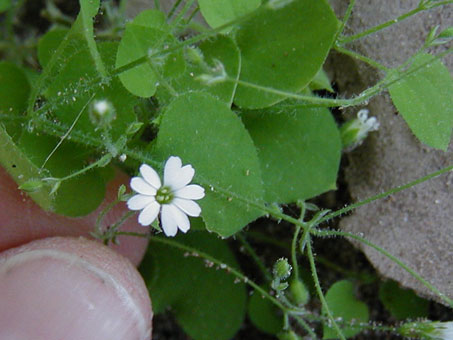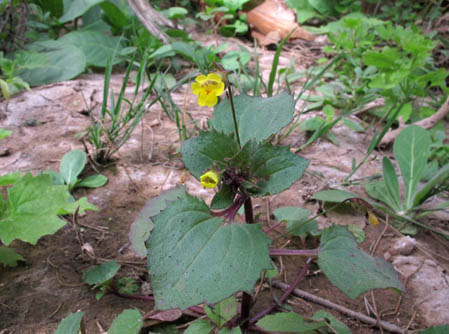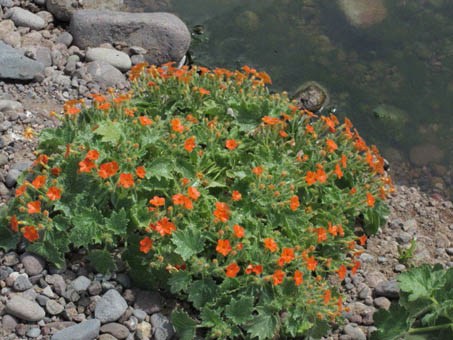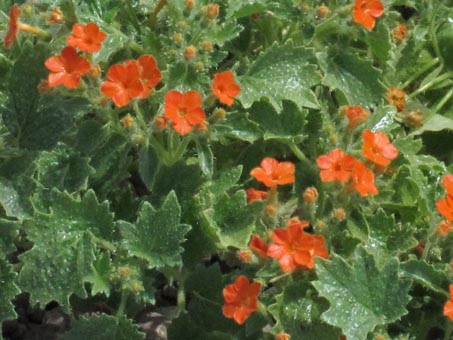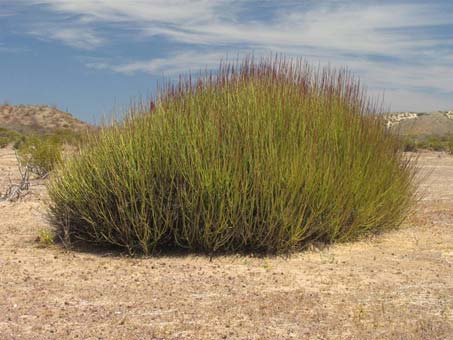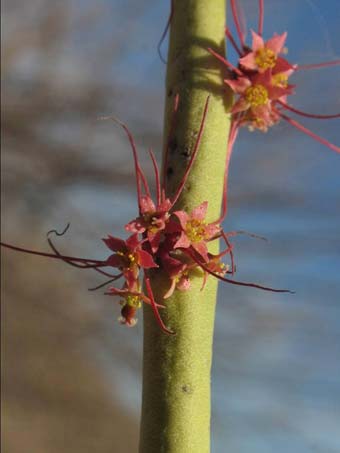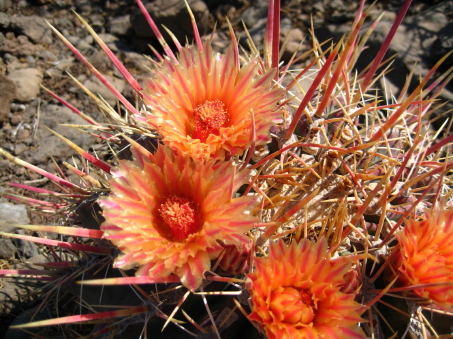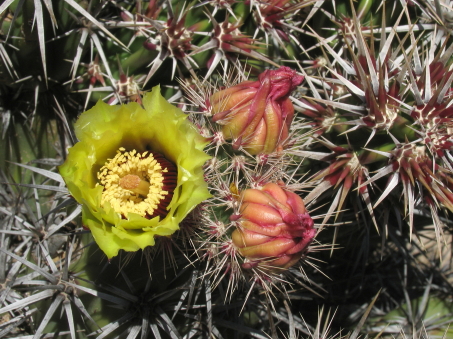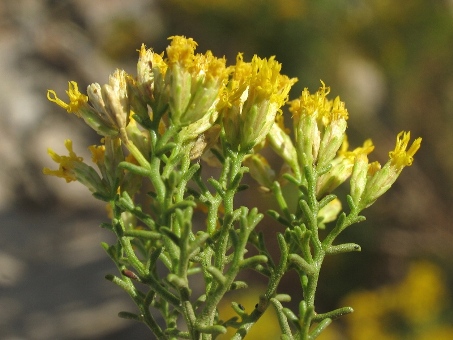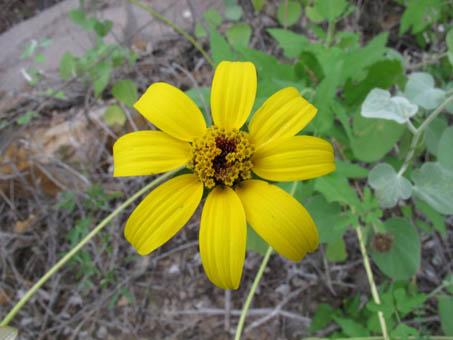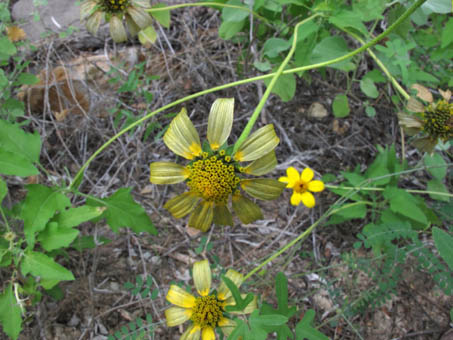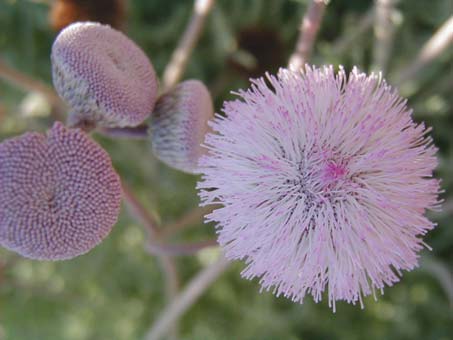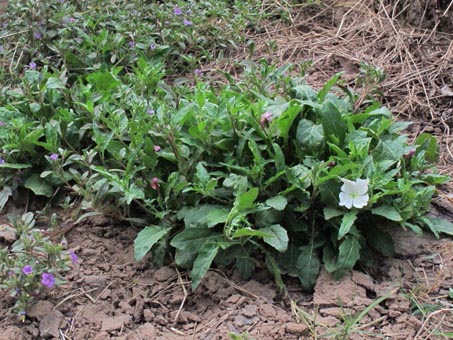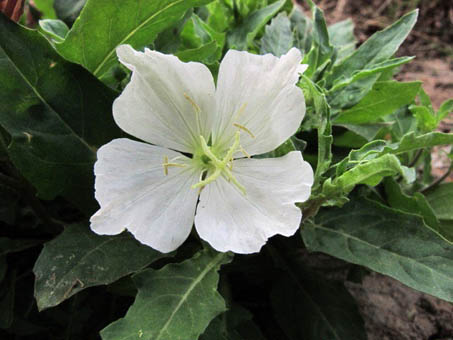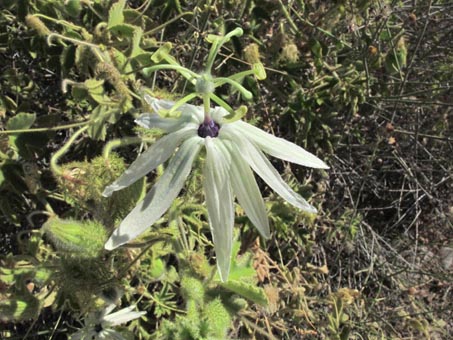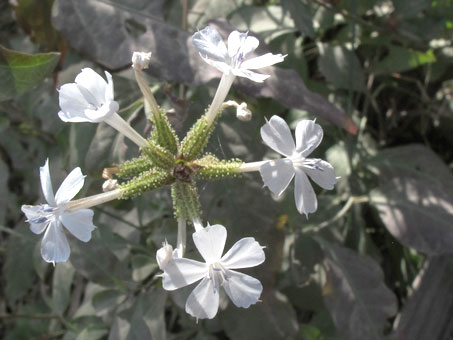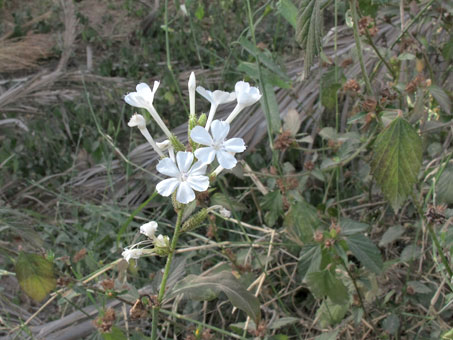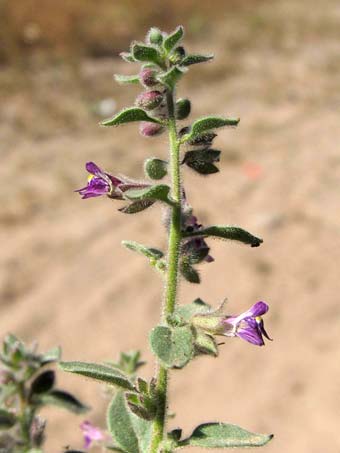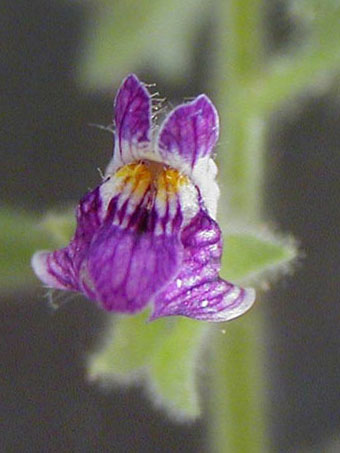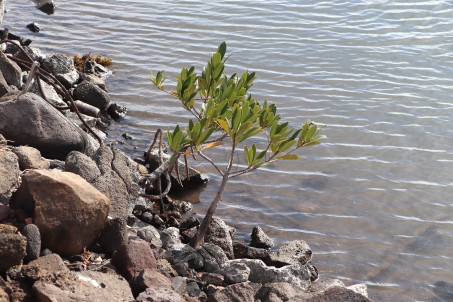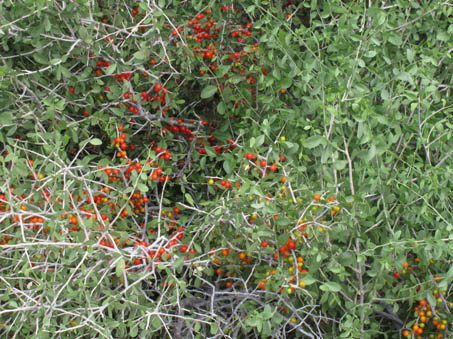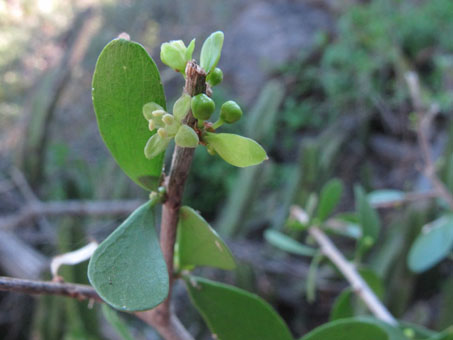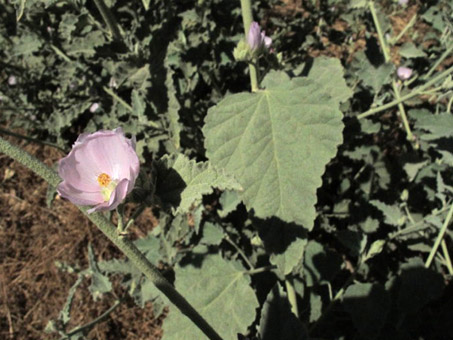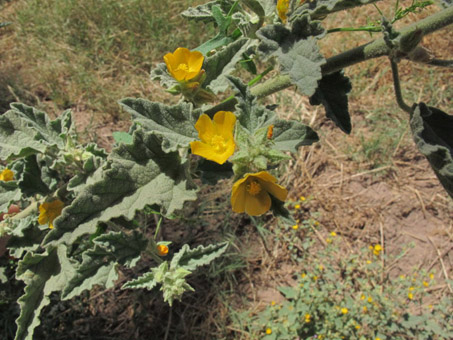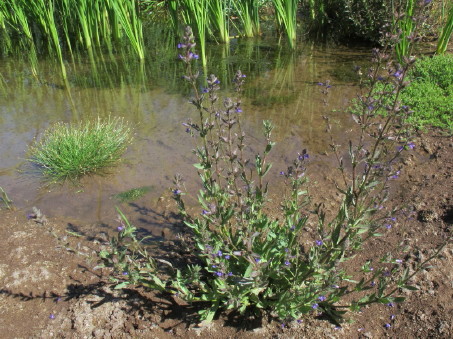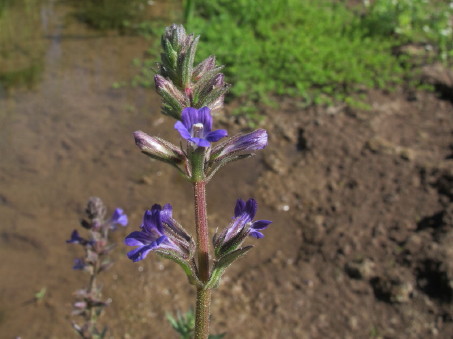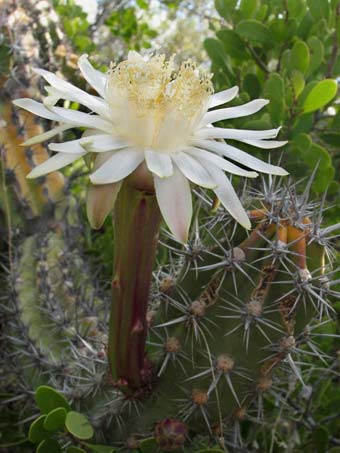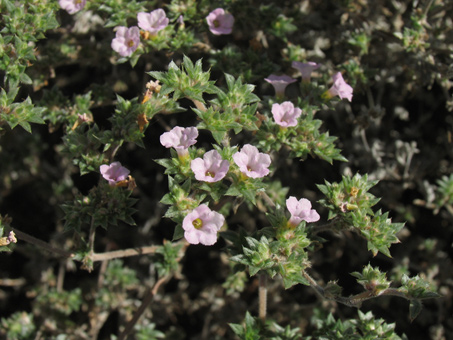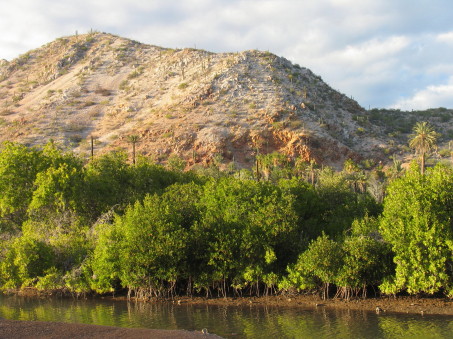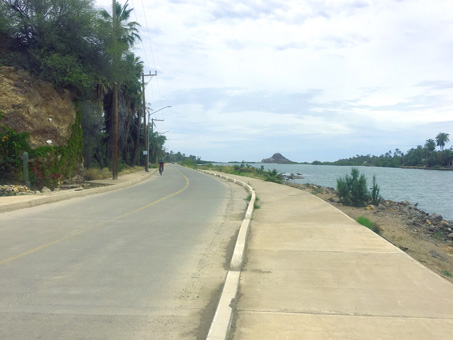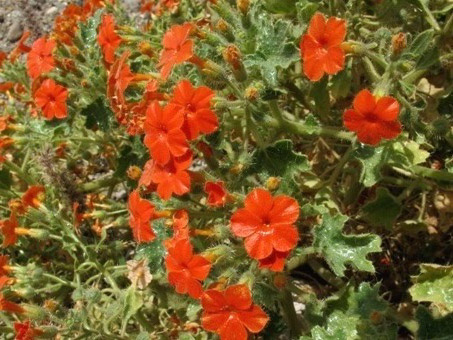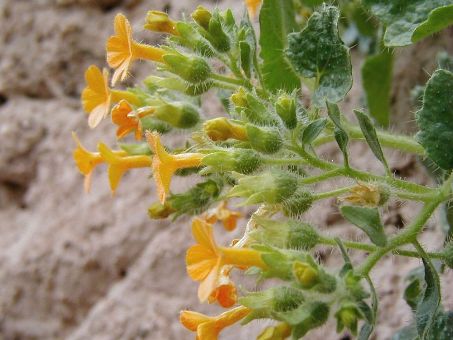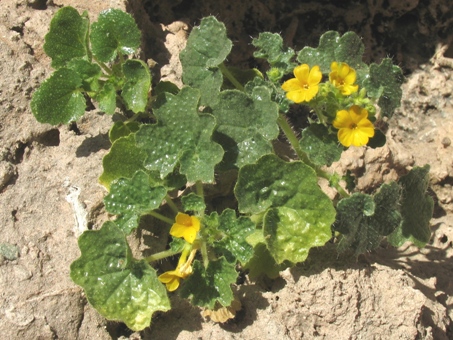
MFP — Mulegé Flora Project

MFP Home | Locations | Geomorphic Formations | Plant Taxa
Plant Taxa
This page contains images of just a few local plant taxa (species and intraspecies), arranged in alphabetical order by name. Click on any image for an enlarged view. All photos by the author.
For more field notes related to the Mulegé area as well as outlying areas and locations further afield on the peninsula, be sure to visit my blog entries covering late 2012 to present, available at Notes from South of the Border.
A - B
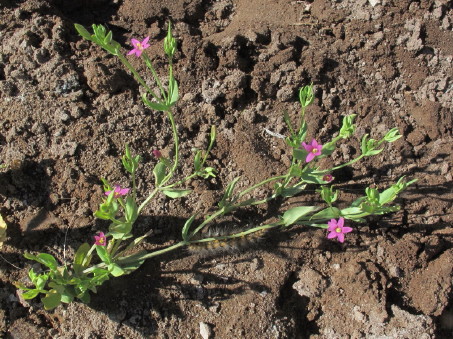
Centaurium capense (Gentianaceae). There's a Wooly Bear caterpillar (4-5 cm L) almost invisible on the underside of the stem.
Cuscuta legitima (Convolvulaceae) plants densely covering and parasitizing a large patch of Euphorbia polycarpa ground cover.
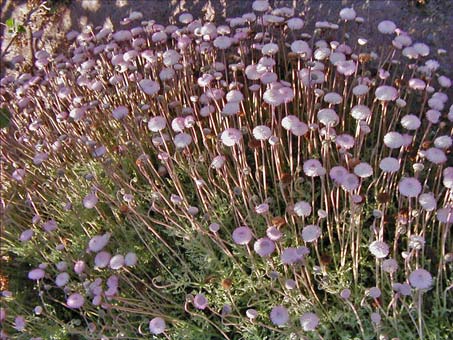
Hofmeisteria fasciculata var. fasciculata (Asteraceae). Herbage variable, thin to fleshy, slightly to very glandular-pubescent.
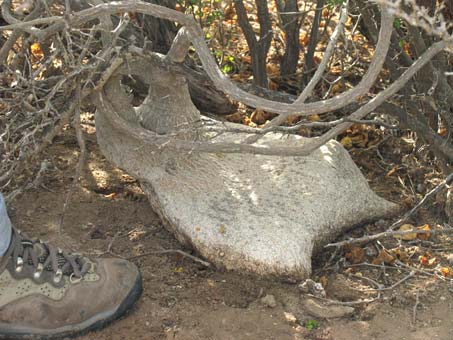
Ibervillea sonorae (Cucurbitaceae). It is not uncommon to see this perennial vine's woody tuber as large as a football.

Ibervillea sonorae. The fruit of this species of Coyote Melon is not bitter. When ripe, the orange or red melon has a thin skin & bright red flesh.
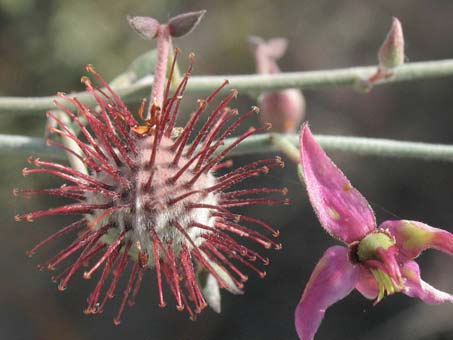
Krameria paucifolia (Krameriaceae). Flower c. 12 mm D x 6-7 mm L. Note the grappling hooks at the tips of the spines on the fruit. They can stick to skin.
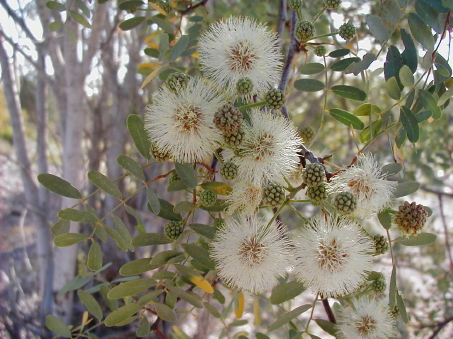
Lysiloma candidum (Fabaceae). Known as Palo Blanco for its white or grayish bark. Flower head globose, 1.5-2 cm D.

Matelea pringlei (Apocynaceae). Flowers are c. 1.5-2 cm W, brownish-maroon, and each petal has a cluster of thready appendages dangling from the superior surface, mostly along the midline.
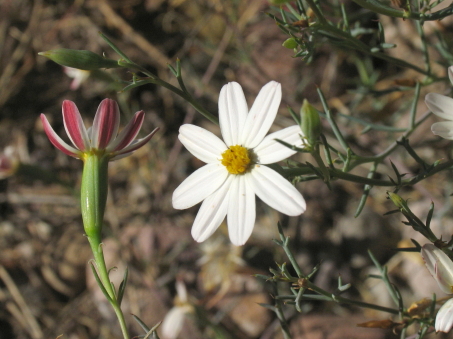
Nicolletia trifida (Asteraceae). Capitulum 12-20 mm D. The herbage has a strong odor, unpleasantly pungent to some. Peninsular endemic.

Parkinsonia Xsonorae (Fabaceae). A rare naturally occuring interspecific hybrid of Parkinsonia microphylla and P. praecox.
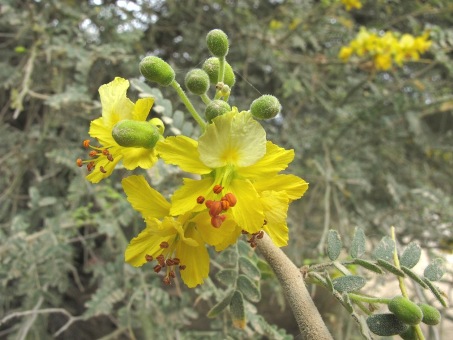
Parkinsonia Xsonorae. Leaflets larger than P. microphylla. Short, nodal spines present similar to P. praecox.

Passiflora palmeri (Passifloraceae). Flower c. 5 cm D. Petals 5, with 5 petaloid sepals. Peninsular near endemic.
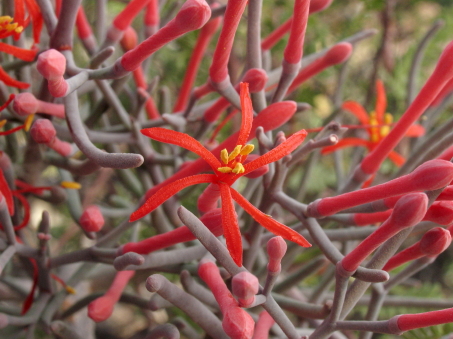
Psittacanthus sonorae (Viscaceae). The red sepals are 28-40 mm L. Parasitizes Bursera spp. in this area.
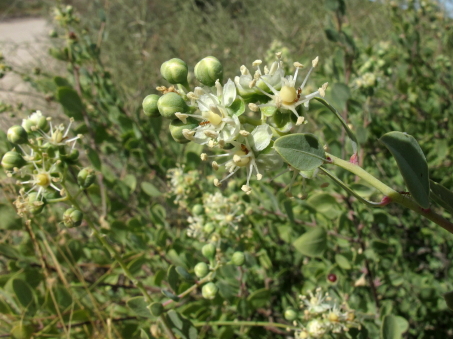
Stegnosperma halimifolium (Stegnospermataceae). The 5 white petals may be lacking and are soon deciduous. The 10 stamens are fused into a ring at their base. Flower c. 1 cm D.
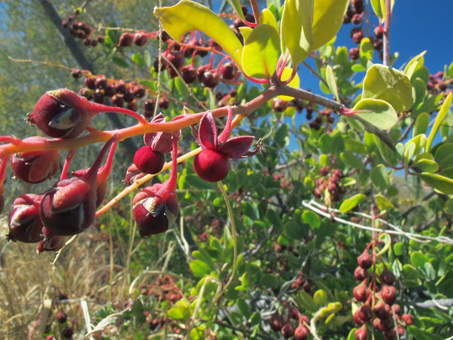
Stegnosperma halimifolium. Two capsules have opened (valves reflexed) to expose the red leathery aril covering the seeds. Fruit c. 1 cm D.

Vaseyanthus insularis (Cucurbitaceae). Flower c. 5 mm D, beaked fruit c. 1 cm D). Fruits on many plants have just a few prickles and were previously recognized as var. inermis.
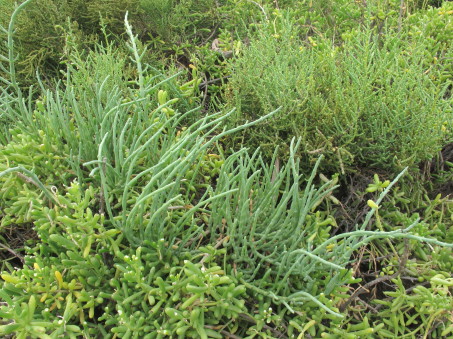
Halophytes at the edge of a coastal lagoon. Chenopodiaceae: Allenrolfea occidentalis, top R and Salicornia pacifica, center. Bataceae: Batis maritima, left.
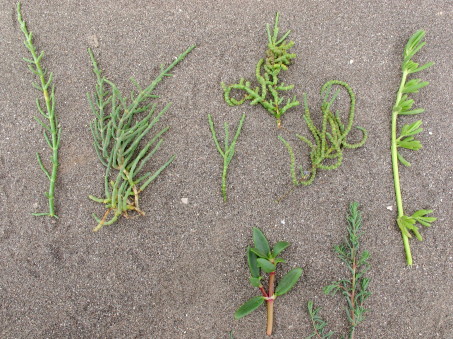
Halophytes clockwise from top L: Salicornia pacifica (2 pieces), Allenrolfea occidentalis (3 pieces); Batis maritima (left); Suaeda nigra (Chenopodiaceae); and Sesuvium portulacastrum (Aizoaceae).
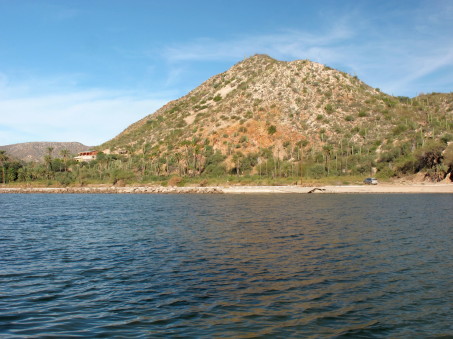
Same location as photo on left in Dec. 2014 after two major floods and unadvised cutting down of damaged plants.
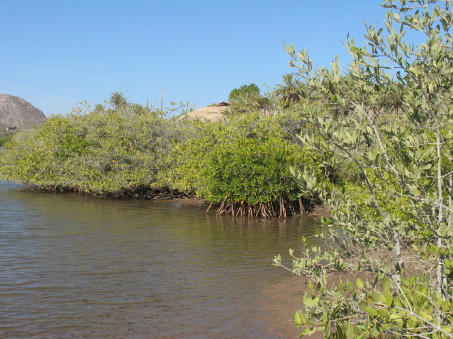
The three mangrove species along the Mulegé estuary in Apr. 2005. Black (gray-green leaves) and White (bright green leaves) in foreground; Red with its darker green leaves and prop roots; White and Black behind and to both sides of the Red.
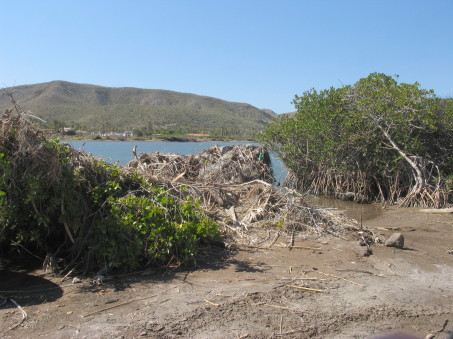
Debris left in the gap of a previously cleared section of mangrove along the estuary. Clear-cutting for river access by boats and repeated floods have resulted in perhaps an 80-90% loss of coverage since the 1980s with the fastest loss occuring from 2006 to 2015.
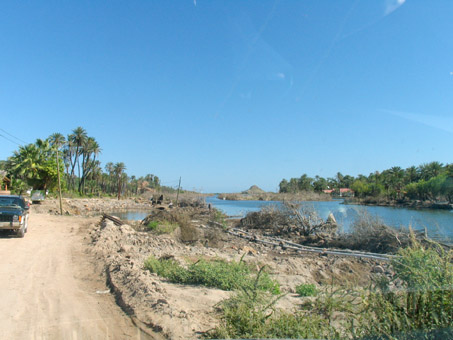
View of the lighthouse (Faro) at the mouth of the estuary (Nov. 2006). All of the gray plants (close and in distance) are mangroves that were denuded in the flood during tropical storm John (Sept. 2006). The road and bank were badly damaged.
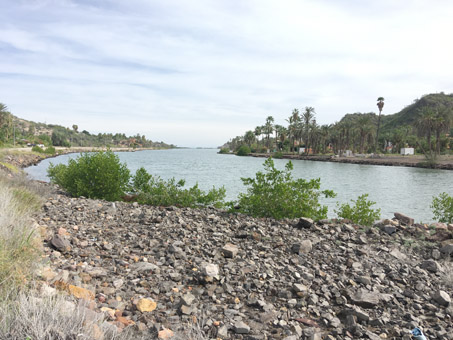
Similar view a little farther upstream (Nov. 2019). A new "boulevard" runs along the river here and rip-rap lines parts of the bank. Current appearance of the river after major floods in 2006, 2009, 2012 and 2014.
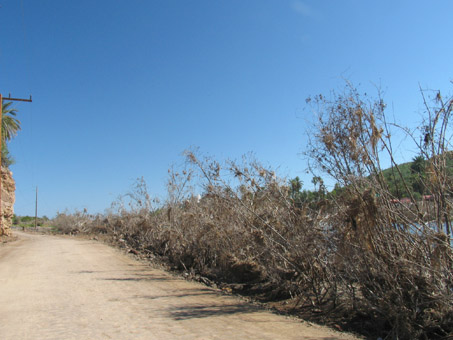
Damaged mangrove thicket farther downstream, Nov. 2006. Due to esthetic concerns and against advice from the local environmental group, the public works dept. cut down almost all of the damaged trees instead of allowing them to regenerate.

On the road behind the mangrove thickets on the north side of the river, Nov. 2006. Subsequent floods removed the power poles and trees at R.
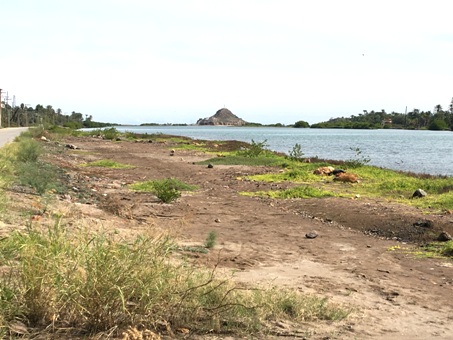
Same location as in photo at left but from Nov 2019. Salt marsh vegetation is slowly coming back as are the mangroves after 5 years without a major flood event (see next two photos)

Red mangrove plantules on lower left are thriving next to some more mature specimens that have already produced prop roots. Black mangroves on right and White on the upper right (Feb. 2019). Seedlings are from 20-50 cm tall.
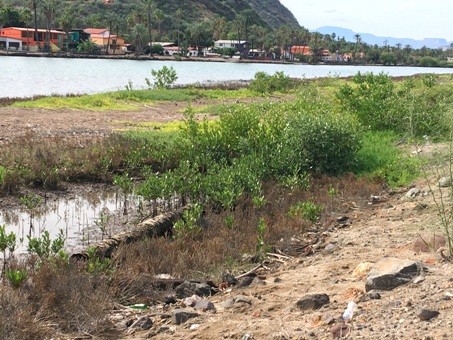
The same site in Nov. 2019. Red, Black and white mangroves. The mangrove plantules (center) have about doubled in size and there are many more new plantules in the foreground. The larger shrubs behind the clump are White mangroves. Seedlings from 20-100 cm tall.
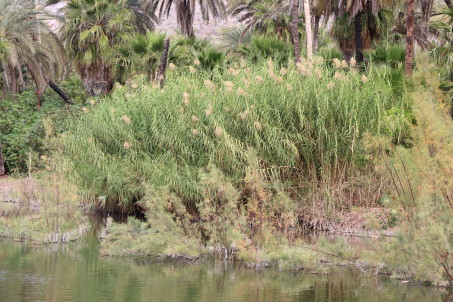
Phragmites australis subsp. berlandieri (Poaceae) with non-native, invasive Tamarix aphylla (Tamariaceae) in the foreground.
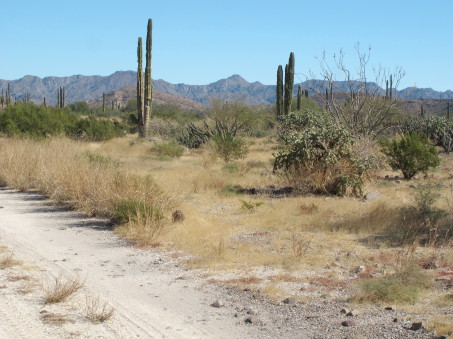
Cenchrus ciliare (Buffel grass, Poaceae) is aggressive along roadsides and other disturbed areas. The low grasses losing ground are native annuals, including Aristida adscencionis, Bouteloua barbata & B. aristidoides.
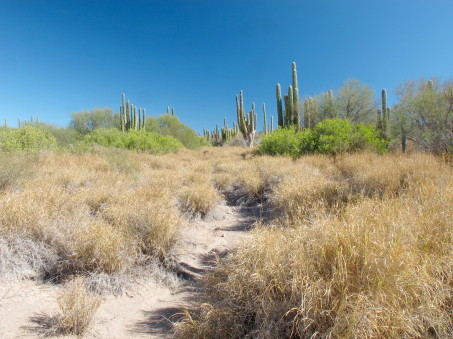
Cenchrus ciliare has taken over an area originally bulldozed to create a road in the late 1990s. It has crowded out all other annuals and perennials here (in 2018) on the edge of a salt flat.
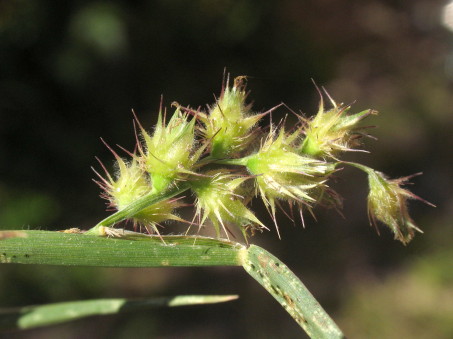
Cenchrus echinatus (Poaceae), another non-native, has burs that are more numerous–but just as sharp–and much smaller (4-5 mm D) than the native C. palmeri (photo at right). Spine L ± bur D.
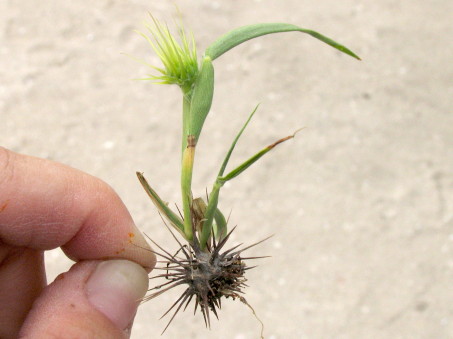
Cenchrus palmeri (Southern Sandbur, Poaceae) has painfully sharp spines on the 1 cm burs. Here the bur is seen with its developing sprout and 2 new burs. Spine L ± bur D.
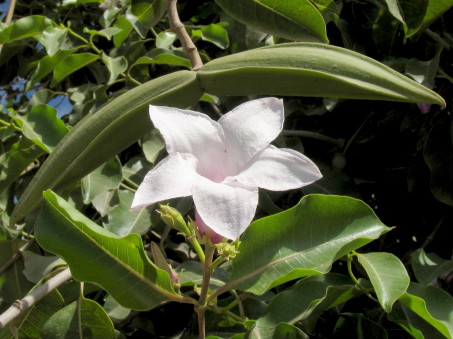
Cryptostegia grandiflora (Apocynaceae) is an introduced woody vine that fortunately as yet hasn´t been sucessful spreading within the oasis; it is a common garden plant. In other BCS wetlands, it has become a pest. Fl 5-9 cm D.
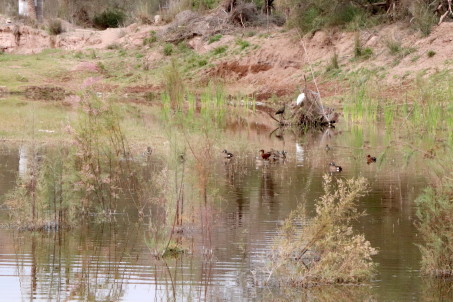
Tamarix aphylla and T. ramosissima (Tamaricaceae), two non-natives in the oasis' newest wetland area. Though not very clear, the birds pictured are: Cinnamon, Blue-winged and Green-winged teals; a Snowy Egret; and a White-faced Ibis.
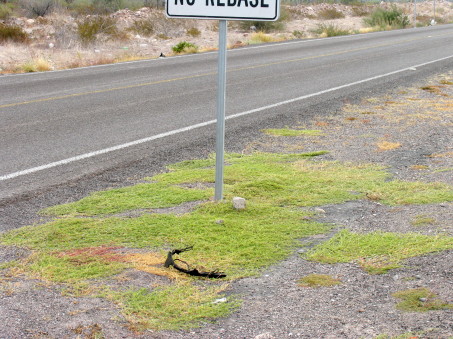
Tribulus terrestris (Zygophyllaceae), an invasive non-native, is found along roadsides, such as here on the main highway. It is a hot weather annual with a hearty seed bank.
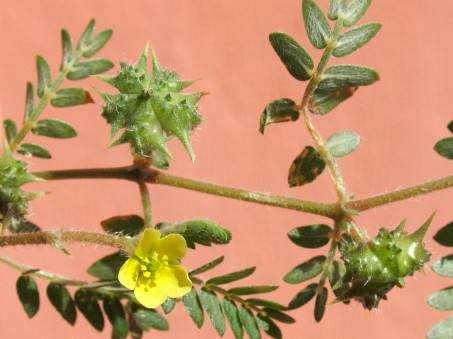
Tribulus terrestris plants can flower and produce fruit quickly and yet measure only 2-4 cm H. Flowers 6-10 mm D, fruit to 10 mm D.
An interesting find
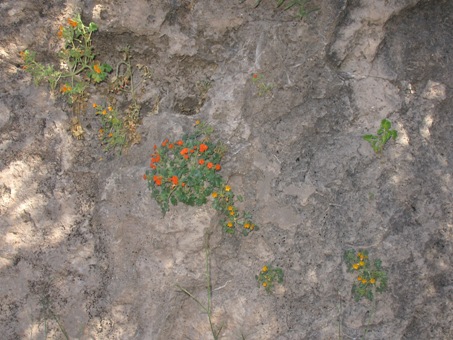
The author first came across a population of Eucnide aurea with red flowers on this cliff face in 2002. In 2004, some orange flowered plants had shown up right next to the ones with the typical red flowers.
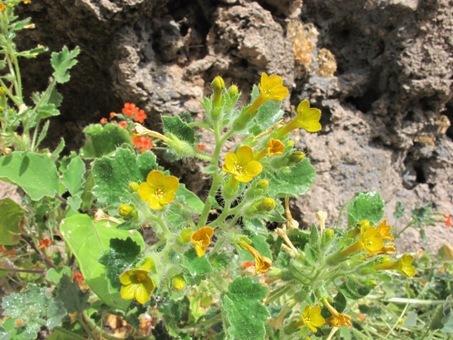
Then in 2015, the author came across a small number of plants on a nearby cliff face in the immediate area that had greenish yellow flowers. They were smaller than either the plants with red or orange flowers nearby and the limbs were also more often ascending than approaching rotate.
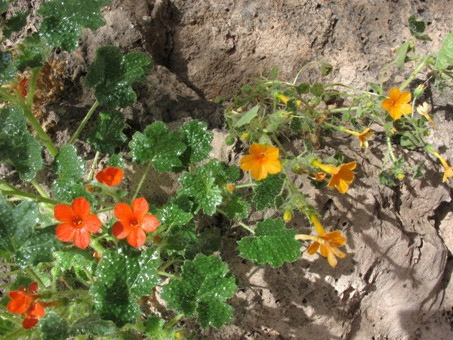
The red and orange flowered plants growing right next to each other. Note the size difference between their limbs.
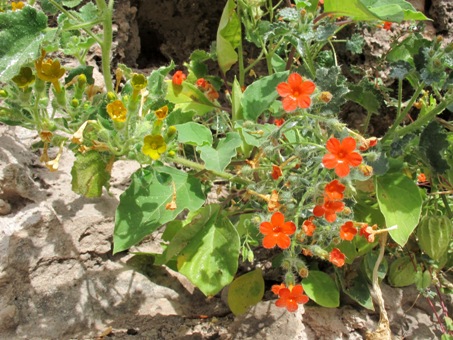
Here the yellow and red are growing next to each other. Again, note the size difference and postures of the limbs on the two plants.

An interesting factoid about some Eucnide, like E. aurea. They commonly grow on cliff faces & disperse their seeds ingeniously: the peduncles (usually 1 cm or less in flower) elongate & grow backwards towards the cliff to drop the seeds in crevices. The penduncles pictured here are approx. 12 cm L. Amazing!

